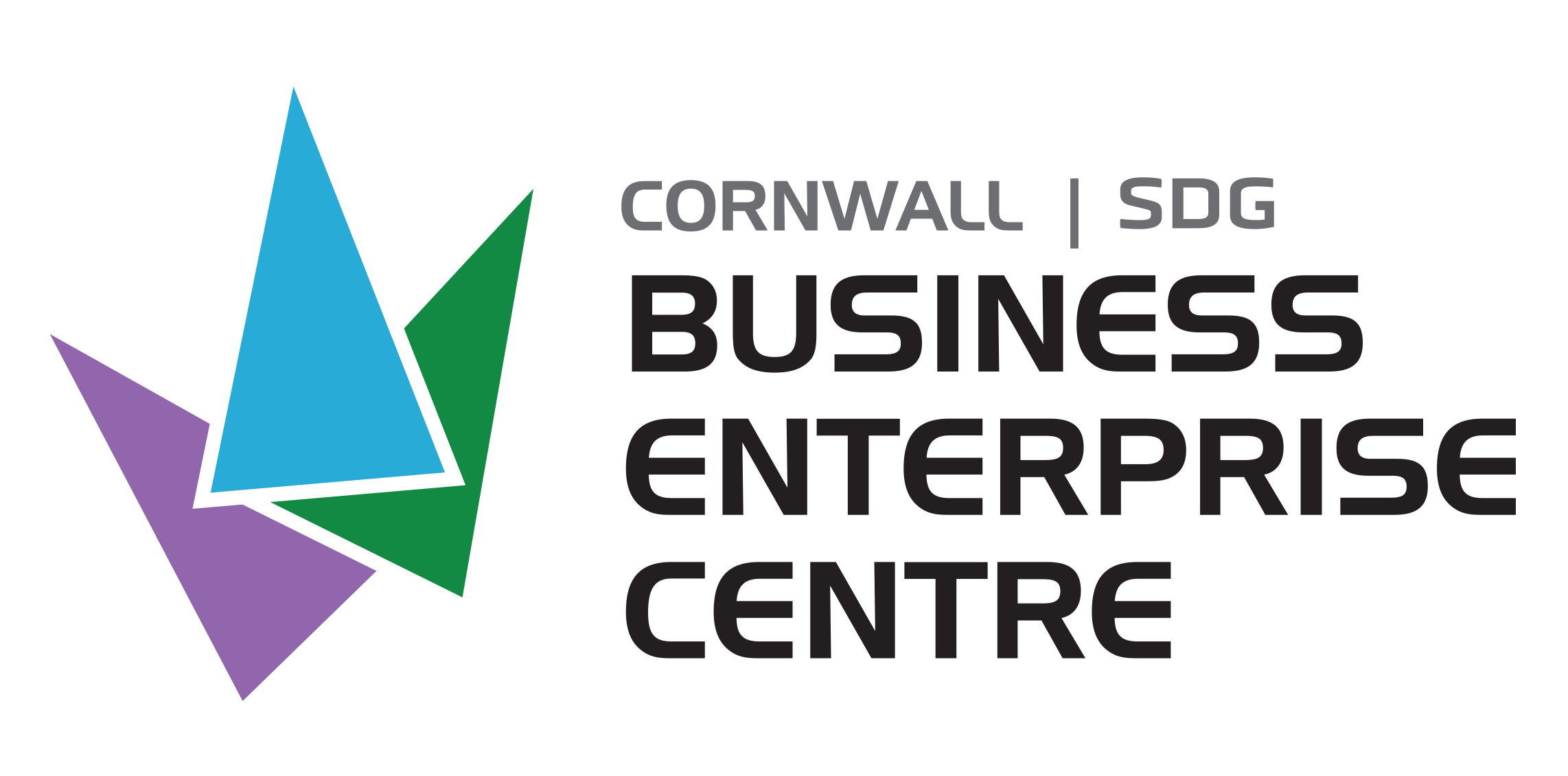Supply chain management refers to the ways a company controls all the steps involved in manufacturing and delivering a product or service.
Supply chain management aims to ensure goods or services are created:
- In the right quantity
- At the desired level of quality
- On time
- In the right place
- At a competitive price
Achieving this requires carefully managed logistics (coordination of materials and processes). To manage their supply chains effectively, companies must:
- Know their customers’ needs
- Understand how much of a product or service customers require in a given timeframe
- Decide how much inventory to produce and maintain
- Acquire the right raw materials at the right price from trusted suppliers
- Set and uphold quality standards
Pricing Products/Services
Are your sales volumes growing, but you can’t seem to turn a profit? Or maybe you’ve got a great product but sales just aren’t picking up? It could be you have a problem with your pricing strategy.
Pricing affects both your overall profitability and how your company is positioned and perceived in the marketplace. It’s also one of the key factors you need to get just right for your company to succeed.
BDC Senior Business Advisor Alka Sood says there are seven key steps entrepreneurs can follow to establish a pricing approach that works for their business.
1. Calculate your direct costs
Direct costs include the cost of raw materials, including duty, freight or shipping charges, plus direct labour costs that are incurred to produce a product or provide a service.
2. Calculate your cost of goods sold or cost of sales
The cost of goods sold or the cost of sales represents the cost of producing a product or providing a service that is ready for sale.
If you’re a retailer or a manufacturer, your “cost of goods sold” include your direct costs plus other costs such as general supplies, freight and factory overhead that are incurred to produce and deliver the product to your customer. If you’re a transporter or wholesaler, your “cost of sales” would include your direct costs plus other costs such as labour and equipment costs and facility costs if there is a warehouse or garage for instance.
A simple way to calculate cost of goods sold is to add up your raw materials or product costs, wages, benefits, amortization expenses and factory overhead.
Amortization expenses, also known as depreciation, relate to the cost of equipment and facilities that are used in the production and delivery of services provided to your customers.
Factory overhead may include such items as utilities costs and supervision. Leave out costs associated with marketing, selling or administration.
Cost of goods sold = Raw material costs + Cost of labour + Amortization expenses + Factory overhead
For a wholesaler/distributor, the cost of sales includes the costs of buying the products from a manufacturer plus the labour and amortization costs you incur to handle, store, and deliver the product to your end customer—the retailer.
Cost of sales = Cost of products + Cost of labour + Supplies + Amortization expenses + Facility overhead
Subtract your cost of goods sold or your cost of sales from your total revenues to calculate gross profit. Gross profit represents the amount of money that is left to spend on marketing, selling and administration and earn a profit. Gross margin is a related term and is gross profit as a percentage of revenues.
3. Calculate your break-even point
Most business owners have a good sense of other costs that they need to recover when selling a product or service—but they don’t always factor the overhead costs that ultimately affect profitability.
These include the costs of running a business and going to market regardless of your manufacturing or sales volumes. Overheads are typically referred to as “fixed costs” because these costs do not necessarily increase (or decrease) if volume increases (or decreases). You need to include these indirect costs to calculate your break-even point accurately.
“Say you run a lawn maintenance company,” says Sood. “Your direct costs are things like what you pay your staff, fuel costs or parts for providing the service. But you also have to consider things like travel between sites, time spent repairing and maintaining equipment, accounting services, and so on. If those costs aren’t factored into your price, you could end up losing money even though you have revenue coming in.”
Examples of indirect fixed costs (also referred to as overhead costs) include selling, general and administration expenses such as:
- Salaries and benefits of office staff
- Marketing and advertising
- Rent or mortgage and property taxes
- Depreciation (office equipment)
- Insurance and professional fees
The break-even point is the amount of sales dollars you need to generate to recover all your expenses and have a profit of $0.
4. Determine your markup
The markup is expressed as a percentage of cost of goods sold or cost of sales. It is set to try and ensure that a company receives a high enough gross or profit margin to be able to pay for its indirect fixed costs while also earning a target profit.
Furthermore, markups are normally used in retail or wholesale businesses as an easy way to price items when a store contains several different types of products. With information on your cost of goods sold and break-even point, you can decide on the size of your markup. Markups are the amount you add to your cost of goods sold or cost of sales to determine the price of a product or service.
5. Know what the market will bear
Sood says it’s important to remember that you can’t choose your markup based on math alone.
“If your competitors all have lower profit margins and you offer a higher price that would give you a higher margin, you could lose sales,” she says. “How much you can charge depends on your strategic position in the market.”
She notes the importance of deciding ahead of time how you want to be positioned.
“If you want to be an exclusive provider of a specialty product or service, you’re probably aiming to sell at a lower volume but for a higher price,” Sood says. “If you’re looking for high-volume sales because you are offering commodity goods, you’ll have to keep your prices low to compete.”
Sood has seen commodity companies sell huge volumes of product and generate millions in gross profits but with single digit gross margins, while niche companies with lower sales have posted gross margins of 60% or more.
Pricing a product can be different than pricing a service. A product is tangible. Your customer can see it, so the value is visible. With a service, there’s lots that goes into providing the service that your customers don’t see. Make sure your prices reflect the real value you’re delivering.
6. Scan the competition
Because your competitors’ prices can have a direct impact on what you’re able to charge, Sood says it’s key to know your marketplace.
“Learn everything you can about your competition, what they’re offering and their prices,” she says. “That will give you a sense of the going rate and can also give you some ideas about how to differentiate.”
She gives the example of a snowplowing company. One that has already paid off all its equipment may be able to charge lower rates than competitors that haven’t. So if you can’t compete on cost, you may instead want to offer better service.
“You could charge more but with the promise that you’ll plow sooner than anybody else,” she suggests. “But be careful, even if you say you’re charging a small premium for better service, your customers could expect the moon. On the other hand, if you charge really low prices, you may still find customers trying to negotiate you down even more.”
7. Revisit your prices regularly
The business environment is constantly changing, and that can affect your goals and margins. Sood notes that annual budget setting is a good time to look at how your costs for inputs, energy, labour, interest rates, taxes and more may be increasing.
If you do raise prices, it’s good practice to personally explain to your customers the reasons why. They won’t be thinking about your costs, only the product or service. Let them know which costs have increased for you and what’s reflected in the increase. If you haven’t had a price increase in a few years, remind them of that.
“And keep looking at what the competition is doing,” she says. “If everybody else is increasing what they charge, there’s no reason why you shouldn’t, too.”
Supply Chain Management
Complex global supply chains, increasingly demanding clients and the strong trend toward more customized products are putting more demands on supply chains.
In response, supply chain management—the design, control and monitoring of your supply chain—has come to play an increasingly important role for businesses. And while information technology is providing some solution to these problems, there are also more basic practices and concepts that remain useful in a complex, fast-changing world.
Whether you are just beginning to establish your supply chain or are looking to improve what you already have, here are 6 tips to improve supply chain management in your business.
1. Find the right people
The best supply chain professionals have strong communication and relationship management skills to deal with both internal and external stakeholders. They also have the ability to think strategically and create value.
Once you’ve found the right people, you’ll want to organize your supply chain to maximize their effectiveness.
Some companies place supply chain professionals in various business units, while others centralize their operations in a single department. You may also want to consider a hybrid approach that combines centralized planning with decentralized execution to provide better services.
2. Establish alliances with key suppliers
You shouldn’t simply be telling your supplier what to do. You should listen to your suppliers and create a partnership to achieve common goals. You’ll want to:
- Create a mechanism to ensure the continuity of the relationship;
- find methods to resolve problems;
- jointly pursue continuous improvement goals; and
- ensure that performance targets are being met
Such an approach will ensure that you use the talents of your supplier base and pursue continuous improvements.
3. Match supply chain and business line
Many businesses want their supply chain to simultaneously be efficient, fast, agile, customizable, and flexible. Yet these capabilities are often mutually exclusive and tend to require different skills.
One solution is to develop multiple supply chains within your business to respond to different supply requirements and cost demands depending on the business line it serves.
By correctly identifying the priorities of your business strategy, you will be able to organize your supply chain in a way that fits your business model.
4. Improve the flow of information
Getting the right product at the right place as fast as possible is one of the primary goals of supply chain management. To achieve this goal, many supply chains will tend to carry too many products at a time, leading to increased costs and inefficiencies.
To limit your inventory levels, focus on transferring information to your suppliers as quickly as possible. They will then be able to increase or decrease supply in accordance.
Just like inventory should always be moving, delays in information transfer should also be tackled as soon as they appear.
5. Make technology work for you
Before selecting what technology solution you purchase, review what part of your process you want to improve and select technology that best satisfies your need.
Many individual software solutions manage parts of the process, but there are very few overall solutions. Also, many individual software solutions do not integrate well with other software, which means that information flow is severely hampered.
Generally, the size of the software solution you require depends on the nature and complexity of your business.
6. Get outside help
An outside perspective can help you evaluate your business processes and eliminate waste.
Whether you are trying to implement a just-in-time inventory management system or simply trying to increase your company’s operational efficiency, hiring an expert to look at your overall supply chain management and production process is probably a good idea.
Distribution Channels
Distribution is one of the most important aspects of product development. But it often takes a back seat to product design.
Here are 4 steps to help get your distribution channel running smoothly.
1. Think about distribution early
Some great products never get off the ground because distribution was an afterthought.
Take a close look at your product as it’s being developed. Think about its characteristics, its market and how it fits the buying needs of your target customers.
This information is vital for choosing the right distribution channel for it.
2. Decide on your approach
Should you sell your products yourself or find a distributor?
It’s a question of strategic planning. Selling your product to a distributor is a good option if you feel you don’t have the capacity yourself. A larger distributor usually has more marketing power than a small one.
If you do decide to distribute yourself, it’s important to develop a marketing strategy. A wide variety of promotion strategies exist for various types of products and budgets.
Be sure to consider online marketing and social media. The Internet has given entrepreneurs cost effective and easy-to-use tools to punch above their weight and compete with much larger businesses.
Another marketing strategy is to target a focused niche. Taking advantage of a niche market involves promoting your product through advertising, social media and gatherings where your target clientele is present.
3. Consider starting small
Competition can be fierce for a deal with a mass distributor or retailer. They’re often inundated with new product pitches and rarely take one on.
Large retailers and distributors have to consider a potential supplier’s longevity and ability to consistently deliver and support the product.
If you can address such concerns, it can be very lucrative to sell into a large distribution channel.
But it can also be costly if your efforts fail—akin to a bet-the-farm strategy.
Consider starting with smaller operations outside the big distribution channels. With success there, you can establish a track record.
Once you’ve built a solid foundation for growth, it should be easier to approach a larger distributor.
4. Multiple channels
To reduce risk, you can also consider a multi-pronged marketing and distribution strategy.
For example, one part of the strategy could be targeting geographic locations that would be easiest to serve and provide the best return. Within these regions, find out which distributors supply the independent and small retailers.
Next, try to get your product into their distribution channel, either as a supplier or, as is becoming more common, as a partner in an alliance.
Another part of your strategy could involve targeting larger, more national distributors or retailers.
Reference: BDC.ca


